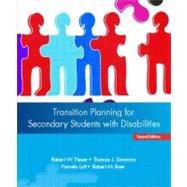
| Transition Context: Implementing Transition Systems | |
| Life Satisfaction and Productive Futures | |
| Transition Legislation and Policy Development | |
| Transition Models and Promising Practices | |
| Career Development: Theories for Transition Planning | |
| transition Programs: Creating A Transition Perspective Of Education | |
| Transition Assessment and Postschool Outcomes | |
| A Curriculum Framework for Transition | |
| Instructional Strategies and Transition Settings | |
| Transition Services and Collaboration | |
| Transition Planning: Planning For Transition To Adulthood | |
| Participatory Decision-Making: Increasing Student Self-Determination | |
| Multicultural Competence for Working with Families | |
| Transition Planning | |
| Role of the Transition Coordinator | |
| Transition Outcomes: Achieving Quality Outcomes | |
| Transition to Employment | |
| Postsecondary Education and Career Paths | |
| My Home and Community: Developing Supports for Adult Living | |
| Recreation and Leisure in the Community | |
| Glossary | |
| Table of Contents provided by Publisher. All Rights Reserved. |
The New copy of this book will include any supplemental materials advertised. Please check the title of the book to determine if it should include any access cards, study guides, lab manuals, CDs, etc.
The Used, Rental and eBook copies of this book are not guaranteed to include any supplemental materials. Typically, only the book itself is included. This is true even if the title states it includes any access cards, study guides, lab manuals, CDs, etc.